Understanding Pool Skimming Basics
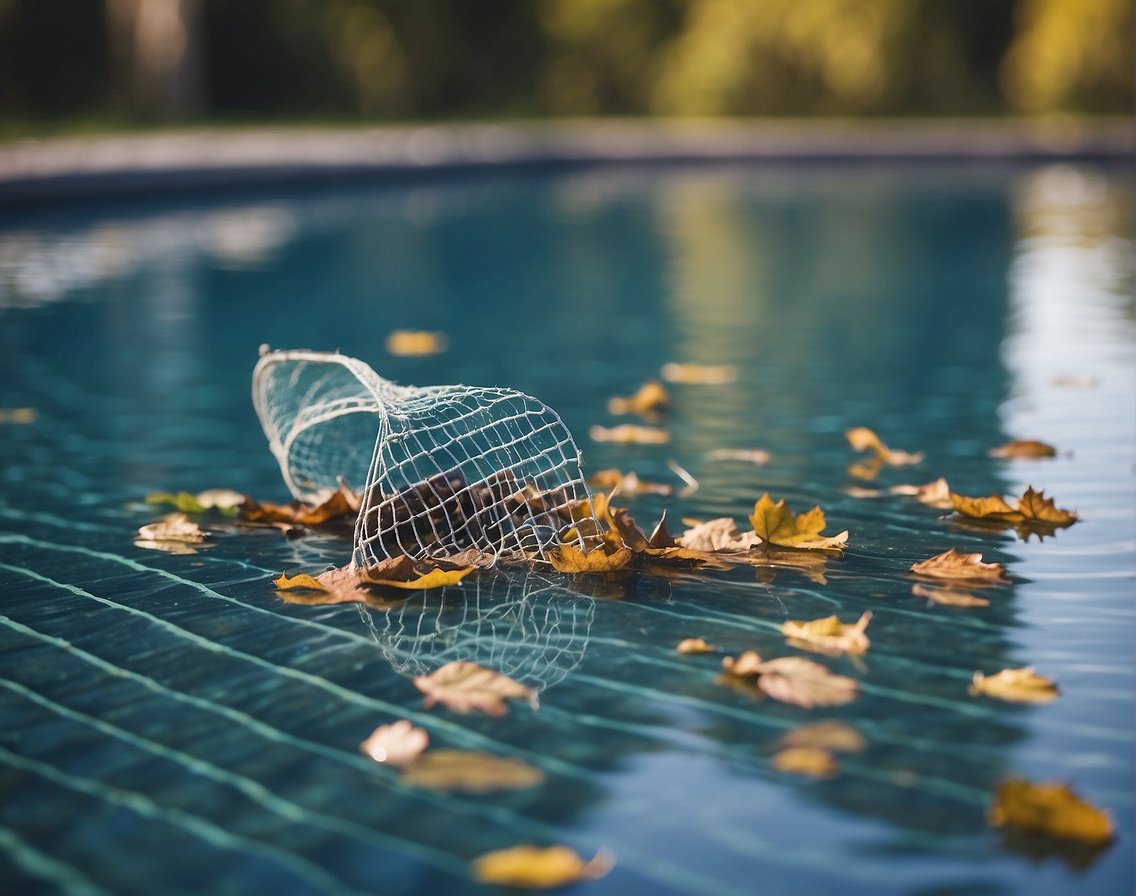
Before diving into specifics, it’s crucial to comprehend that pool skimming is a fundamental part of pool maintenance. It ensures that your pool water remains clean and inviting.
Importance of Regular Skimming
Regular skimming is essential for maintaining pool water quality. We should aim to remove debris, such as leaves, insects, and other foreign materials, from the pool surface promptly. This practice prevents these elements from sinking and possibly clogging the pool’s filtration system. A clean pool surface enhances the effectiveness of the pool’s circulation system and reduces the amount of chemicals needed to maintain water quality.
- Frequency: Aim to skim the pool at least once a day.
- Benefits: Keeps water clean and prevents filter from clogging.
Selecting the Correct Skimmer Tools
Choosing the right tools for skimming can make a significant difference in the effectiveness of our pool cleaning routine. A pool skimmer typically consists of a flat net attached to a long pole, allowing us to collect debris from the pool’s surface. When selecting a skimmer, consider the size of your pool and the type of debris you commonly encounter.
- Net Type: A fine-mesh net is ideal for smaller particles, while a wider mesh works well for leaves and larger items.
- Pole Length: Ensure the pole is long enough to reach the entire surface of the pool without straining.
By understanding and implementing these skimming basics, we pave the way for a clean and healthy pool environment. Proper pool skimming goes hand in hand with systematic pool maintenance, helping us keep the pool water in pristine condition for all to enjoy.
Optimizing Chemical Levels for Effective Skimming
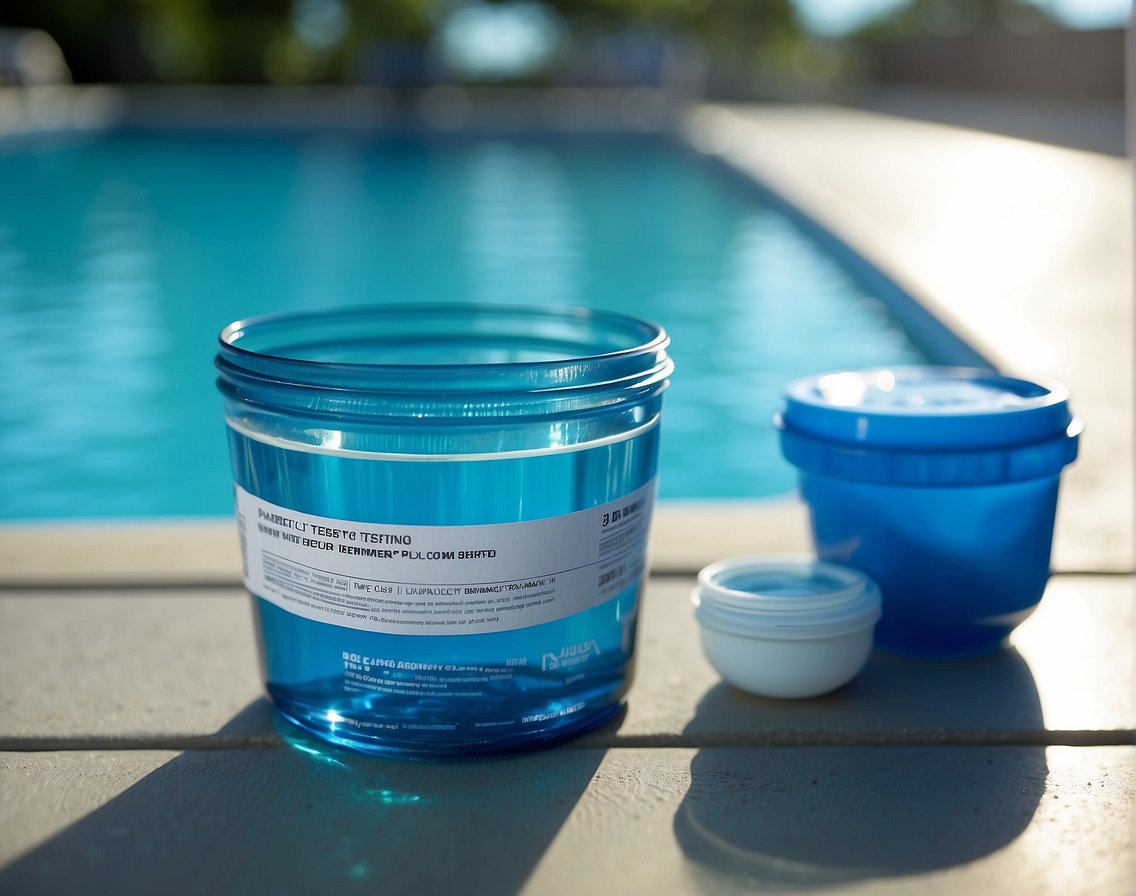
Proper skimming is significantly impacted by maintaining optimal chemical levels in your pool. We address two critical components: chlorine levels and the balance of pH and alkalinity. These factors are essential in preventing algae growth and ensuring the skimmer operates effectively.
Maintaining Proper Chlorine Levels
Chlorine is crucial for sanitizing the pool and keeping it clear of algae. The ideal chlorine level should be:
- Free Chlorine: 1-3 ppm (parts per million)
To maintain proper chlorine levels, we recommend routine testing with a reliable pool test kit. If levels are low, chlorine should be added, but always avoid over-chlorination as it can damage the pool equipment and cause discomfort to swimmers.
Balancing pH and Alkalinity
The balance of pH and alkalinity plays a pivotal role in pool chemistry and skimmer functionality. Here are the optimal ranges:
- pH Levels: 7.4 – 7.6
- Total Alkalinity: 100 – 150 ppm
Keeping pH levels in check prevents corrosion and scaling, while correct alkalinity acts as a buffer for pH, minimizing fluctuations. Adjustments can be made using alkaline increasers or pH reducers as necessary. Use a test kit for accurate measurements and add chemicals incrementally, allowing them to circulate before retesting.
Preventative Pool Care Techniques
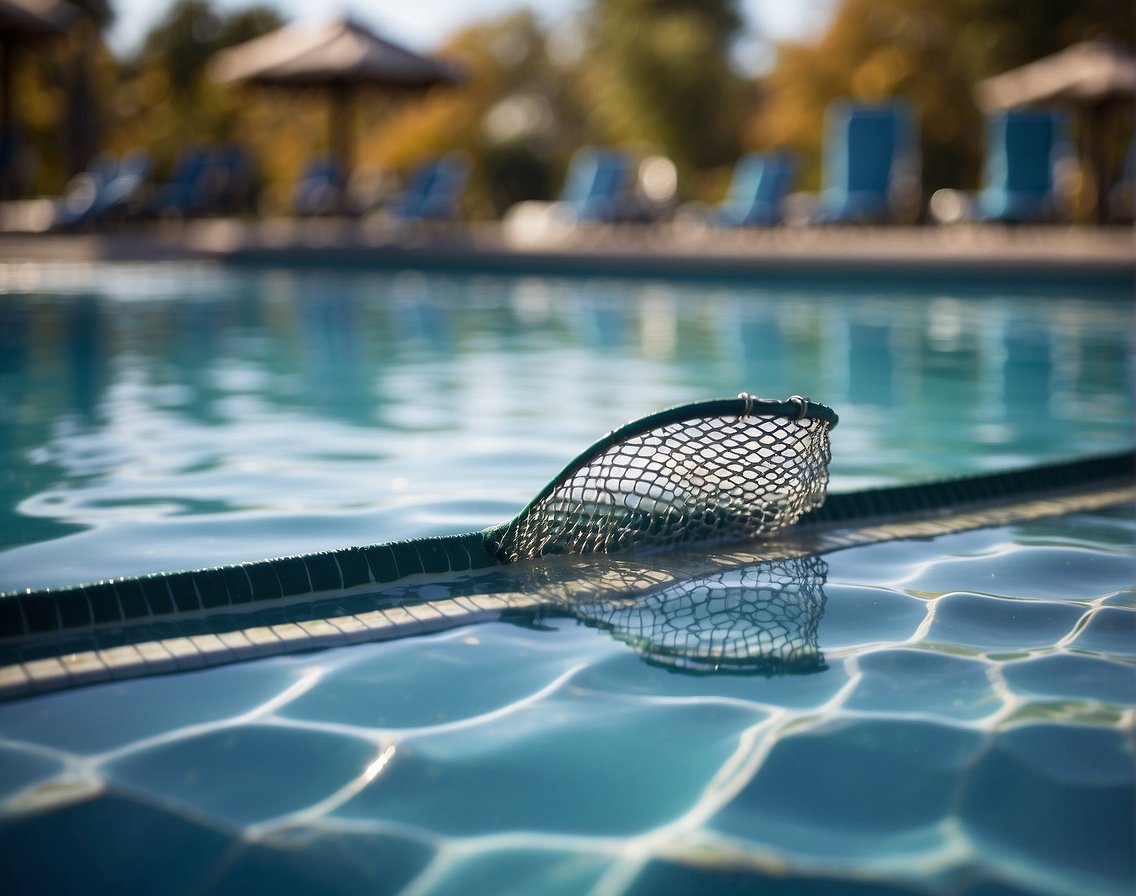
Effective preventative pool care ensures that we maintain a clean and healthy swimming environment. By adopting regular cleaning routines and maintaining our pool equipment, we can prevent most common issues associated with pool skimming.
Effective Brushing and Vacuuming Strategies
Brushing: We should use a suitable pool brush to sweep the walls and floor of the pool at least once a week. This action removes algae, prevents staining, and enhances the effectiveness of the pool’s chemicals.
- For plaster-lined pools, we use a stiff-bristled brush.
- Fiberglass or vinyl pools require a softer brush to avoid damage.
Vacuuming: Using a vacuum, either manual or automatic, is crucial for removing debris from the pool.
- Manual vacuums are more affordable and allow for targeted cleaning, particularly in areas that automatic cleaners might miss.
- Automatic pool cleaners, including robotic pool cleaners, provide convenience and consistent cleaning.
| Cleaning Type | Frequency | Equipment Choice |
|---|---|---|
| Brushing | Once per week | Pool brush suited to pool type |
| Vacuuming | As needed or at least once a week | Manual vacuum or automatic/robotic pool cleaner |
Consistent Pool Equipment Maintenance
Regular maintenance of pool equipment extends its life and ensures it operates efficiently. Here are key practices we follow:
Skimmer Baskets and Filters: We clean out skimmer baskets and backwash filters regularly to prevent clogs and maintain proper water flow.
Pump and Motor Check: We inspect the pump and motor for signs of wear or damage. Schedule professional maintenance at least once a year.
O-rings and Seals: We lubricate O-rings and seals to prevent leaks and ensure a tight seal, using a silicone-based lubricant.
By focusing on these brushing and vacuuming strategies, along with consistent pool equipment maintenance, we build a foundation for healthy, clear pool water year-round.
Troubleshooting and Addressing Common Pool Problems
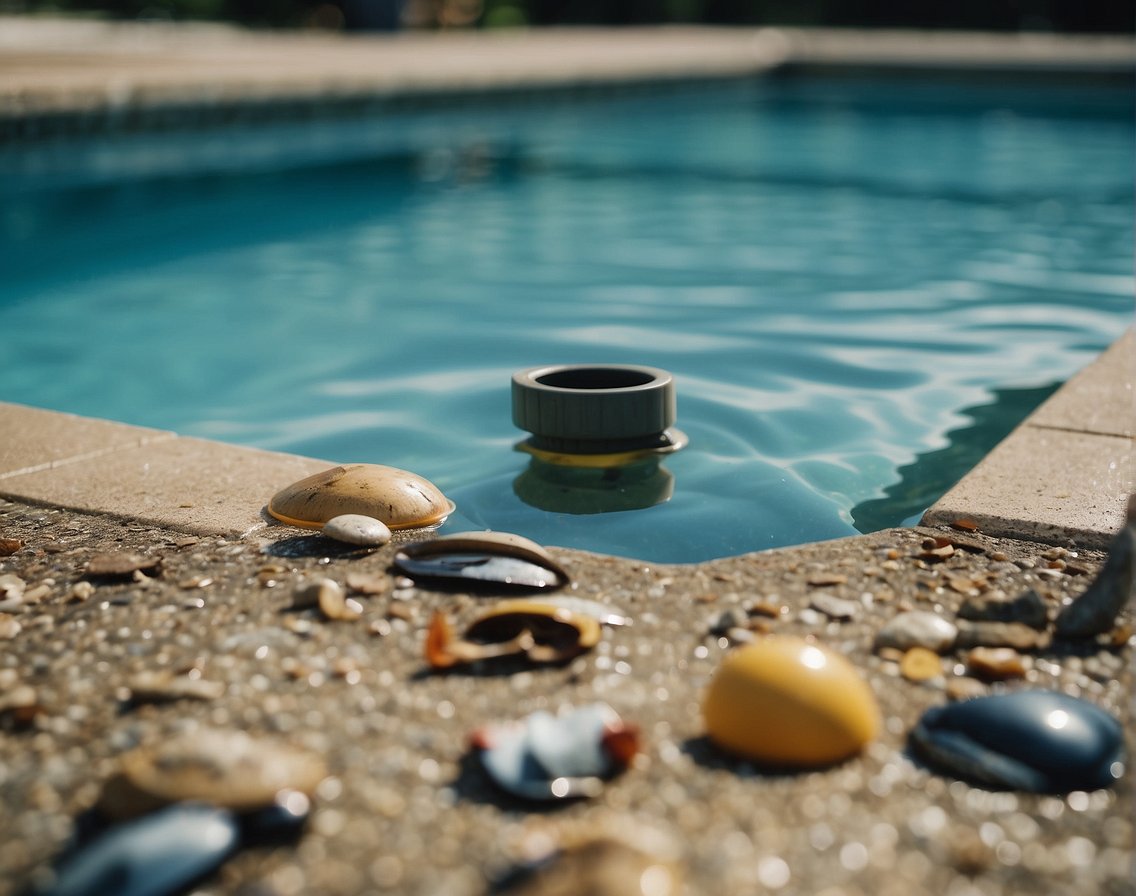
When maintaining a pool, we must keep an eye out for common issues such as algae growth and equipment damage. Proper troubleshooting can prevent these problems from escalating.
Dealing with Algae and Cloudy Water
Algae problem: We address algae by ensuring our pool’s chlorine levels are sufficient to kill these pesky organisms. A lack of chlorine is often the culprit, which allows algae to thrive. Regular shock treatments and algaecide applications may be necessary to keep algae at bay. The steps include:
- Test the water for chlorine levels and pH balance.
- Adjust chlorine levels as needed, aiming for 1-3 ppm.
- Apply an algaecide following the manufacturer’s instructions.
Cloudy water: This is frequently due to a combination of factors such as high chloramines, bacteria, or algae. To clear the cloudiness:
- Shock the pool with a chlorine-based shock product, which will reduce the level of chloramines and eliminate bacteria.
- Run the filter system continuously until the water clears.
- If the problem persists, we may need to look at our filtration system for potential issues.
Preventing and Repairing Equipment Damage
Cracks and leaks: Cracks in the pool structure or leaks in the filtration system can be significant issues. We inspect these closely and take action promptly. For minor cracks, we can use a patch kit. However, extensive damage might require professional intervention.
Pressure gauge: The pressure gauge is critical for monitoring the health of our pool filter system. If the pressure is too high, it may indicate a clog or a need for backwashing. Keeping an eye on this gauge helps us maintain optimal filter function and avoid damage.
- Inspect the pressure gauge regularly.
- Backwash the filter if pressure exceeds the normal range by 7-10 psi.
- Replace the pressure gauge if it’s malfunctioning to ensure accurate readings.
Equipment damage: Regular inspections can prevent escalations in equipment issues. Pool pumps, heaters, and other devices should be checked for leaks, unusual noises, or other signs of wear and tear. We act swiftly to replace or repair parts to maintain an efficiently operating pool system. Being proactive in maintenance saves time and money in the long run.
Advanced Pool Maintenance Strategies
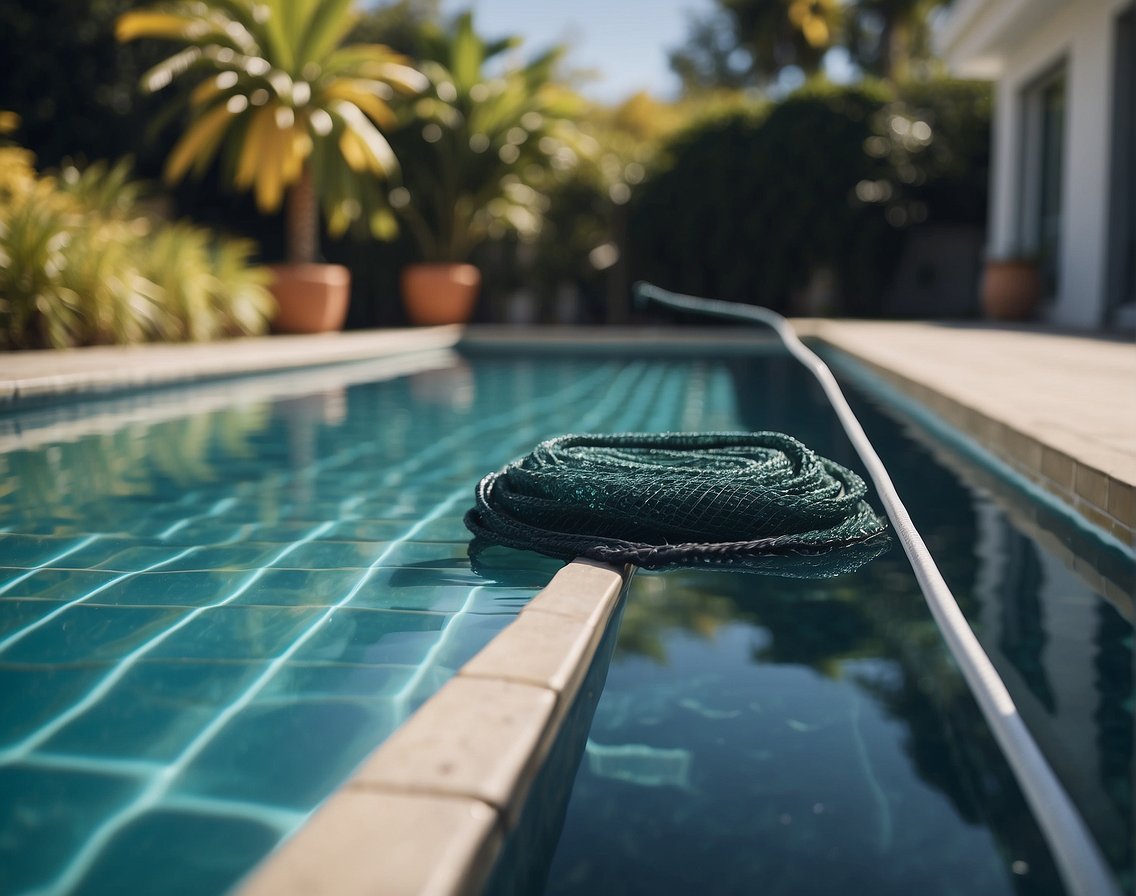
In this section, we’ll cover optimal techniques for backwashing and utilizing pool shock, as well as methods to enhance water circulation and the filtration process for your pool.
Mastering the Art of Backwashing and Pool Shock
Backwashing is a critical step in maintaining our pool filtration system as it reverses the water flow to clean out trapped dirt and debris. It’s important to check the pressure gauge regularly; when it reads 8-10 psi above the normal operating level, it’s time to backwash. Here’s a concise guide:
- Stop the pool pump.
- Rotate the valve to the ‘Backwash’ position.
- Reactivate the pump for 2-3 minutes or until the water runs clear.
- Turn off the pump, set the valve to ‘Rinse,’ and run it for about 30 seconds to settle the pool filter.
- Return the valve to the normal ‘Filter’ position and resume typical operation.
For pool shock, we recommend using it weekly to maintain clear, sanitized water. Pool shock refers to a granular oxidizer, a chlorine-based chemical treatment that burns up bacteria and algae. Here’s what we should remember:
- Always wear gloves and safety goggles.
- Prepare the shock treatment by dissolving the granules in water if instructed—never add water to the chemical.
- Add the dissolved pool shock to the pool in the evening, directly into the water, to avoid UV interference.
- Run the pool pump for at least 6-8 hours after to distribute the shock evenly.
Enhancing Water Circulation and Filtration
Good water circulation is non-negotiable for a clean pool. We should ensure the pool pump runs daily for the duration necessary to circulate the entire pool volume, typically about 8 hours. Use the following tips for enhanced water circulation and filtration:
- Clear Skimmer Baskets: Keep skimmer baskets free from debris to maintain strong and uninhibited water flow into the filtration system.
- Balance Intake and Return Jets: Position return jets downwards at a 45-degree angle to distribute water throughout the whole pool and assist in circulating surface water to the skimmer.
- Regular Cleaning: Clean the pool filter regularly. For sand and D.E. filters that means backwashing, as discussed earlier; for cartridge filters, it means rinsing or replacing the cartridge when the pressure gauge indicates.
- Strategic Use of Pool Pumps: Variable-speed pumps can be programmed for optimal times and speeds, which can significantly improve filtration and save on energy costs.
By focusing on proper backwashing and pool shock techniques, along with enhancing water circulation and the filtration process, we can keep our pool in peak condition.
Frequently Asked Questions
We’ve compiled a list of common questions to guide you on the nuances of pool skimming, ensuring you maintain a clean and safe swimming environment.
How often should I skim my pool to ensure proper cleanliness?
We recommend skimming your pool at least once a day. This frequency can prevent debris from sinking, making it easier to maintain water quality and reducing the need for chemical treatments.
What are the risks of skimming the pool when it’s not necessary?
Skimming your pool when it’s not necessary may cause unnecessary strain on the skimmer and waste energy. Overuse can lead to premature wear and may also disrupt the water balance.
What are the best practices for effectively skimming a pool without backwash issues?
We advise you to gently and steadily move the skimmer net across the surface, ensuring not to disturb debris on the bottom. Also, regularly check and clean the skimmer basket to prevent clogs.
What techniques should I avoid to prevent damaging my pool’s skimmer?
Avoid aggressive or hasty movements that can crack the skimmer’s frame or tear the net. Also, do not overload the skimmer with large debris to prevent damage to the filtration system.
How can I tell if my pool skimmer is operating at optimal efficiency?
We encourage regular inspections of your skimmer basket for signs of wear or damage and monitoring water flow for any reduction that may indicate clogs or blockages in the system.
Are there specific conditions under which I should not use a skimmer for pool maintenance?
We recommend not using your skimmer during storms or high winds when it is likely to become quickly overloaded. Also, refrain from skimming immediately after adding chemicals to allow proper distribution.
